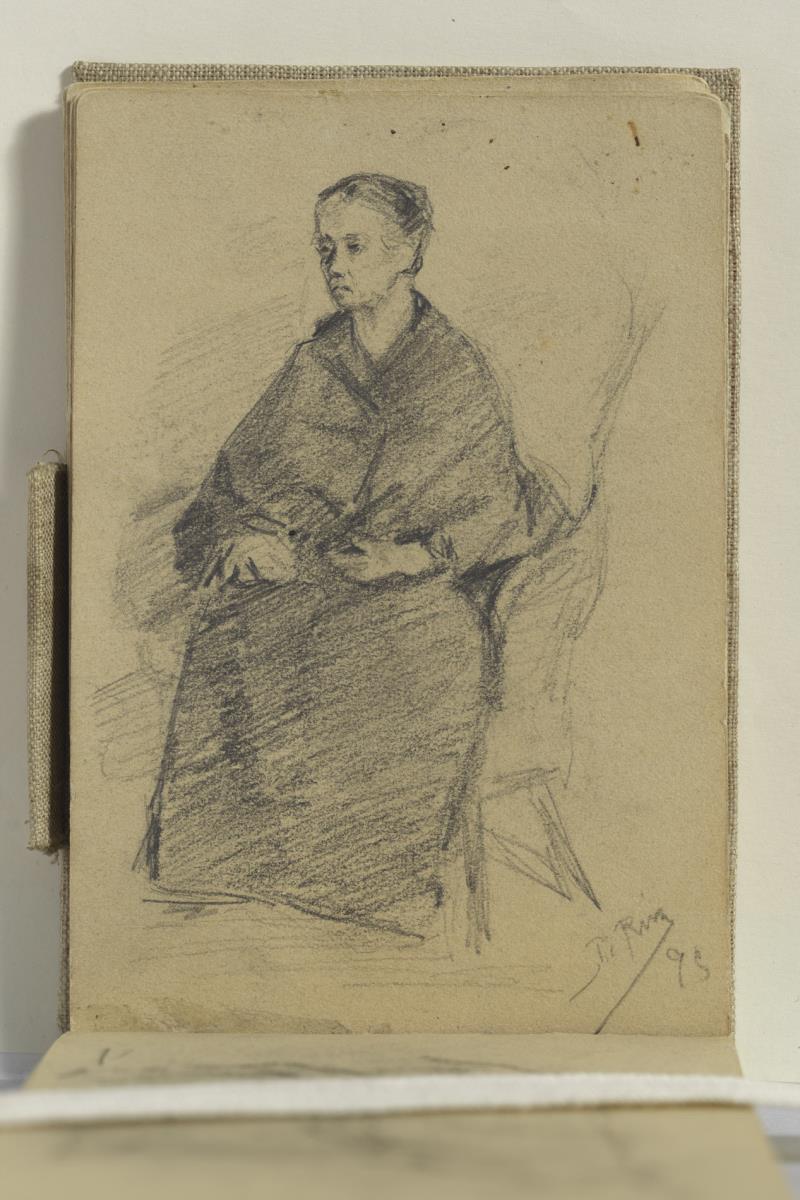Aunt Pepa

Aunt Pepa
Aunt Pepa
The works that Picasso made during his family’s sojourn in Malaga in the summer of 1896 are a logical continuation of the work that the young artist had developed until then, characterised by a gradual distancing from the typical rigidity of academic teaching. Among the numerous drawings and paintings he made of the members of his family, this oil portrait of Josefa Ruiz Blasco (Malaga, 1825–1901), the eldest of the eleven Ruiz Blasco siblings familiarly known as ‘Aunt Pepa’. This picture was commissioned by Picasso’s uncle Salvador, his father’s younger brother, and although it was traditionally thought that he painted it in just under an hour, the technical quality of the work and the artist’s youth when he painted it lead us to rule out this hypothesis.
Although Picasso had made a few drawings of his parents in which he played with the contrast between black and white, the chiaroscuro of this work is beyond comparison among other oils of the same period. The chromatic austerity of the clothes and the background, and the use of slim loose brushstrokes create a sharp contrast with the brightness of the face, where the brushstrokes are free-flowing, much thicker and denser, which favours its Expressionist air and gives it great psychological depth. Picasso managed to perfectly capture the temperament of his aunt, who was described as a pious, lonely woman with a vigorous and arrogant temper. In terms of style, the combination of light and shadow in this oil painting evokes the tradition of Spanish portraiture, especially that of the painting of the Spanish Golden Age. The expressive variations of the face, achieved thanks to the effect of the light on the character emerging from the shadows in the dark uniform background, establish a connection with the works of Baroque Tenebrism (Velázquez, Ribera, etc.) that Picasso had contemplated on his visit to the Prado the previous summer.
The museum also has a portrait produced in the summer of 1895 in which ‘Aunt Pepa’ is depicted sitting in an armchair (MPB 111.174). This work belongs to an album of drawings made as he was moving between Malaga and Barcelona that contains a number of copies of studies from life, family portraits and two copies of works by Velázquez. The style of the artist’s signature on the oil leads us to think that the work was signed at a later date.
57.5 cm x 50.5 cm
Gift of Pablo Picasso, 1970
MPB 110.010












